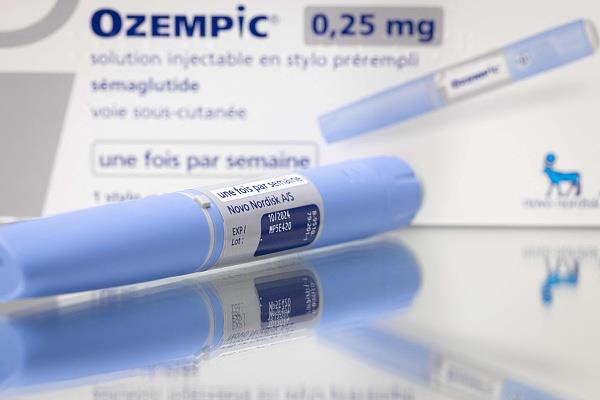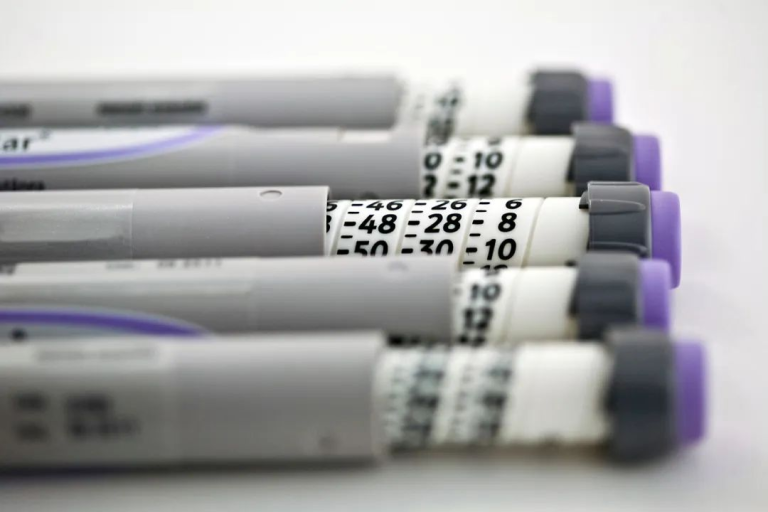6 types of food, allowing your body to produce “Semaglutide” on its own
Semaglutide, as a drug for the treatment of type 2 diabetes and long-term weight management, with its excellent hypoglycemic function and rapid weight loss effect, soon became popular around the world and was widely regarded as the “magic drug for weight loss”.
Gastroenterologists at the University of Washington in the United States have pointed out that in fact, the human body can produce natural versions of these drugs – GLP-1. A SCI paper provides the answer to how to promote the generation of natural smectide. Natural Semaglutide is produced in the lower intestine and can inhibit appetite and slow down gastric emptying
Natural Semaglutide is produced in the lower intestine and can inhibit appetite and slow down gastric emptying
Special bacteria in the lower intestine absorb food components that you cannot digest, such as fiber and polyphenols (plant components removed from many processed foods), and convert them into hormone molecules that reduce appetite and metabolism. These bacteria include GLP-1, which is a natural version of Wegovy and Ozempic.
GLP-1 and other hormones (such as PYY) help regulate blood sugar through the pancreas. They also regulate hypothalamic neurons to tell your brain that you are full, and slow down the movement of food along the digestive tract for digestion in your stomach and intestines. This system even has a name: colon brake.
Since the human body can generate natural smectide, why do we still need GLP-1 drugs such as smectide? This is related to the fact that the structure of GLP-1 drugs is not easily degraded, and natural semaglutide is a peptide composed of 30 amino acids, with a very short half-life in the human body, about 1-2 minutes.
6 foods that promote the production of natural smectin
Many researchers are seeking alternative methods to naturally increase GLP-1 levels in the body. Foods that increase GLP-1 levels:
Eggs. According to a 2016 research review, eggs are a rich source of protein and monounsaturated fats that can play a role in GLP-1 secretion. Another study in 2020 found that egg white is particularly beneficial for the secretion (release) of GLP-1. A study in the 2016 review compared a bagel breakfast with a meal containing three eggs. Over the next 24 hours, a meal containing eggs is associated with lower postprandial blood sugar levels, reduced hunger, and reduced food intake. According to a 2016 review, men also expressed higher satisfaction after eating eggs. This indicates that eggs can help control appetite and improve overall satisfaction with a meal.
Nuts. The 2016 research review mentioned earlier suggests that almonds, pistachios, and peanuts may increase GLP-1 levels through their protein, fiber, and healthy fat content. In addition, the fibers in these nuts slow down digestion, leading to the gradual release of glucose into the bloodstream and correspondingly increasing the secretion of GLP-1. The healthy fats in nuts also play a role as they can help increase insulin sensitivity, further supporting the release of GLP-1.
High fiber particles. The same 2016 research review suggests that high fiber grains such as oats, barley, and whole wheat may increase the credible source of GLP-1 in several ways. Their soluble fibers slow down digestion. This leads to the gradual release of glucose into the bloodstream, triggering the release of GLP-1. In addition, when fiber is fermented by intestinal bacteria, it produces short chain fatty acids (SCFAs) such as acetate, propionate, and butyrate. The research in the 2016 review indicates that these SCFAs can stimulate the release of GLP-1 by binding to L cell receptors.
Avocado. According to the 2016 review mentioned earlier, avocado may increase GLP-1 levels through its high fiber and monounsaturated fat content. The fiber in avocado can slow down digestion, leading to a slower release of glucose into the bloodstream. A study in 2019 found that eating whole avocado during meals increased GLP-1 levels and another appetite regulating hormone called peptide YY, while also lowering insulin levels compared to consuming a control meal.
Olive oil. According to a 2021 research review, studies have shown that unsaturated fats, such as those found in olive oil, are more likely to stimulate the release of GLP-1 than saturated fats such as butter. Similar results also appeared in diabetes rats. Feeding a food rich in monounsaturated fatty acids in olive oil increased GLP-1 levels, decreased weight gain, and increased insulin sensitivity. In humans, a Mediterranean diet rich in olive oil can increase postprandial GLP-1 levels, improve insulin sensitivity, and lower fasting and postprandial blood glucose levels compared to a diet rich in saturated fat.
vegetable Vegetables such as Brussels sprouts, broccoli, and carrots are rich in fiber and vitamins, which help regulate blood sugar levels and may affect GLP-1 levels. A study conducted in Jakarta, Indonesia in 2022 found that eating vegetables before eating carbohydrates would significantly affect the glucose and GLP-1 levels of patients with type 2 diabetes, especially 60 minutes after eating.
The correct lifestyle can also promote the generation of natural smectide
Although we crave quick problem-solving the most, a healthy lifestyle is likely still the most important way to manage metabolic disorders and overall health. This includes regular exercise, stress management, sleep, outdoor activities, and a balanced diet. For most people who have not suffered from obesity or diabetes, it may be the best way to promote healthy metabolism by reintroducing total food and awakening intestinal microbiota to restart the built-in appetite and metabolic control in the intestine.
Adding minimally processed foods to your diet, especially those rich in fiber and polyphenols such as flavonoids and carotenoids, can play an important complementary role in fundamentally addressing the prevalence of obesity and metabolic diseases.
Possible adverse reactions of GLP-1 drug?
According to Joel Bikman, a senior executive who has long worked in nutrition and co-founder of a scientific healthcare company, smart drug manufacturers have found that by significantly increasing their dosage, these drugs have a strong effect on weight loss. Despite some worrying side effects, including nausea, vomiting, diarrhea, abdominal pain, accelerated heartbeat, changes in vision, fainting or dizziness, etc.





